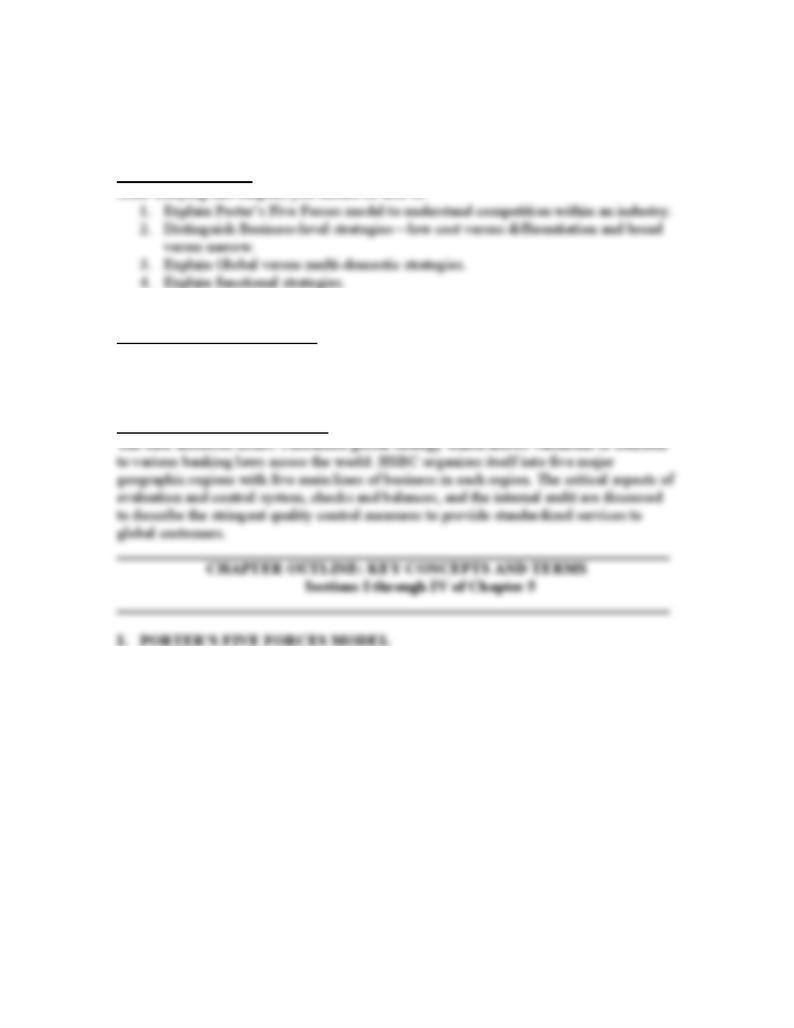
INTERNATIONAL MANAGEMENT Chapter 5: Business and Functional Level Strategy
32
Chapter 5
BUSINESS- AND FUNCTIONAL-LEVEL STRATEGY
Learning Objectives
5. Explain Quality management.
General Teaching Suggestions
Introduce the topic of quality by referring to a leading brand. Students should be
encouraged to examine the strategic measures leading to exceptional quality standards.
Direct the discussion to business-level and functional level strategies.
Opening Case Discussion Guide
1. Key Concepts
Porter’s Five Forces model is based on industrial organization (IO) economics
which argues that all firms in a particular industry face forces within their
industry that significantly affect profitability. Figure 5-2 summarizes the model.
• Bargaining Power of Buyers
The characteristics that determine if the power of the buyers is high include:
i. Concentration of buyers
ii. Ability to switch among different suppliers in the industry
iii. Impact of goods from the industry on buyers’ output
• Bargaining Power of Suppliers
The factors that make suppliers powerful include:
i. Demand for supplier’s products
ii. Whether quality and performance of inputs are differentiated
iii. Ability of the industry to vertically integrate
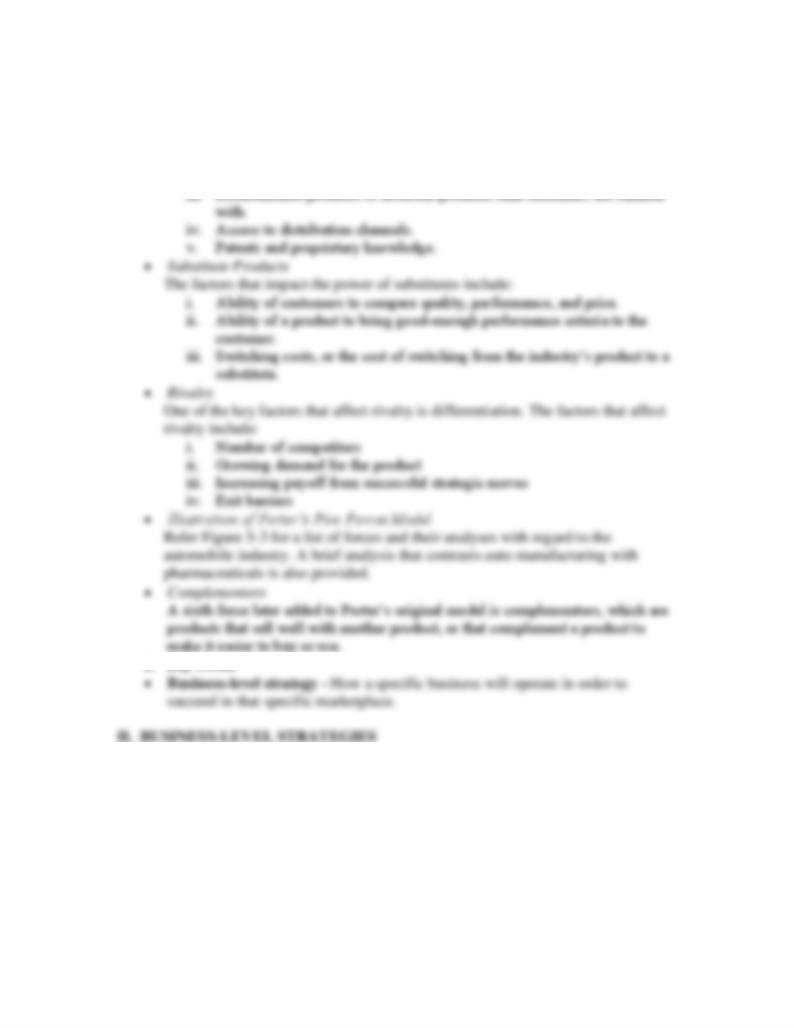
INTERNATIONAL MANAGEMENT Chapter 5: Business and Functional Level Strategy
33
• New Entrants
Ease of entry into an industry also comes from its industry structure. Some of the
structural characteristics of an industry that affect access to that industry are:
i. Economies of scale.
ii. The relationship between size and capital costs.
2. Key Terms
1. Key Concepts
In simplest terms, business-level strategy can be viewed using a two-by-two
matrix which describes four generic business-level strategies.
i. Broad-cost leadership
ii. Broad differentiation
iii. Focused low cost
iv. Focused differentiation
• Cost and Uniqueness
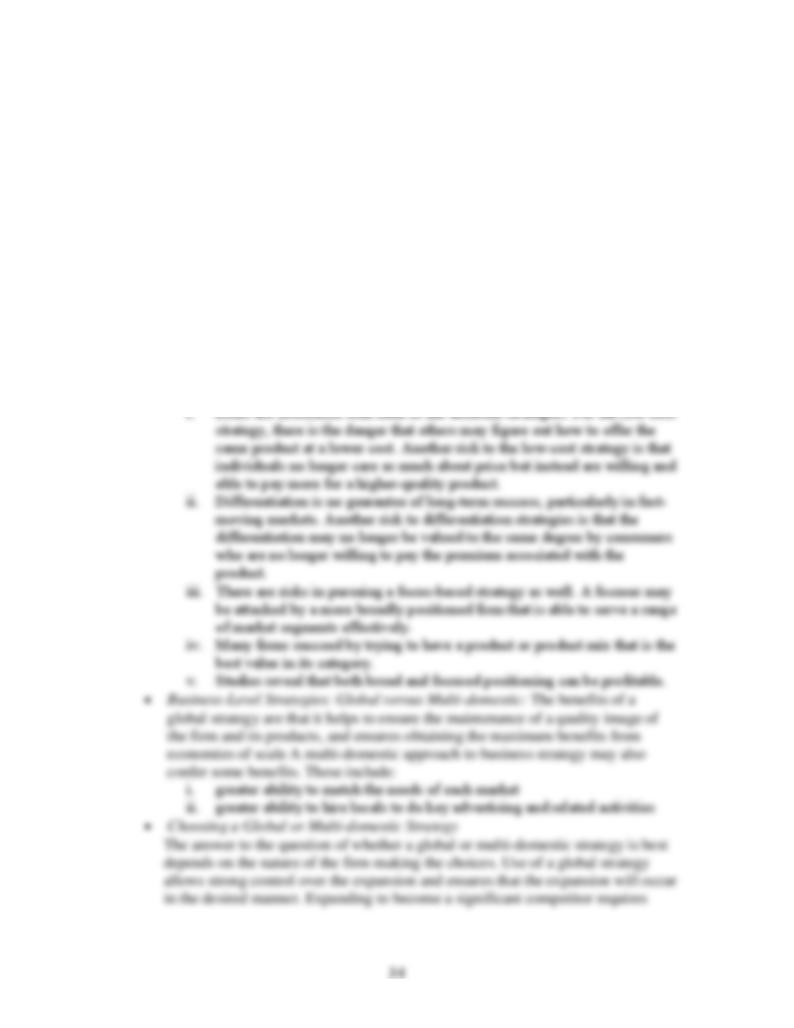
INTERNATIONAL MANAGEMENT Chapter 5: Business and Functional Level Strategy
The two major categories of strategies are low cost and differentiation. In
practice, there is no strict dividing line between the low-cost and differentiation
categories.
• Competitive Scope
Competitive scope is typically divided into a dichotomous variable—broad or
narrow. The key to understanding competitive scope is if a firm tries to serve a
broad range of customers with a broad range of needs.
• Connecting Low Cost/Differentiation and Competitive Scope
Firms pursuing a broad scope can normally be characterized as having either a
"broad-low cost" or "broad-differentiation" strategy. Often there are a variety of
focus differentiators in a market, but each focuses on a somewhat different
customer base. This allows various competitors to each have a differentiated
strategy.
• Changing Business Strategy
Changing business strategy is difficult and should be engaged only with full
consideration of the difficulties that can arise.
• Business-Level Strategic Risks
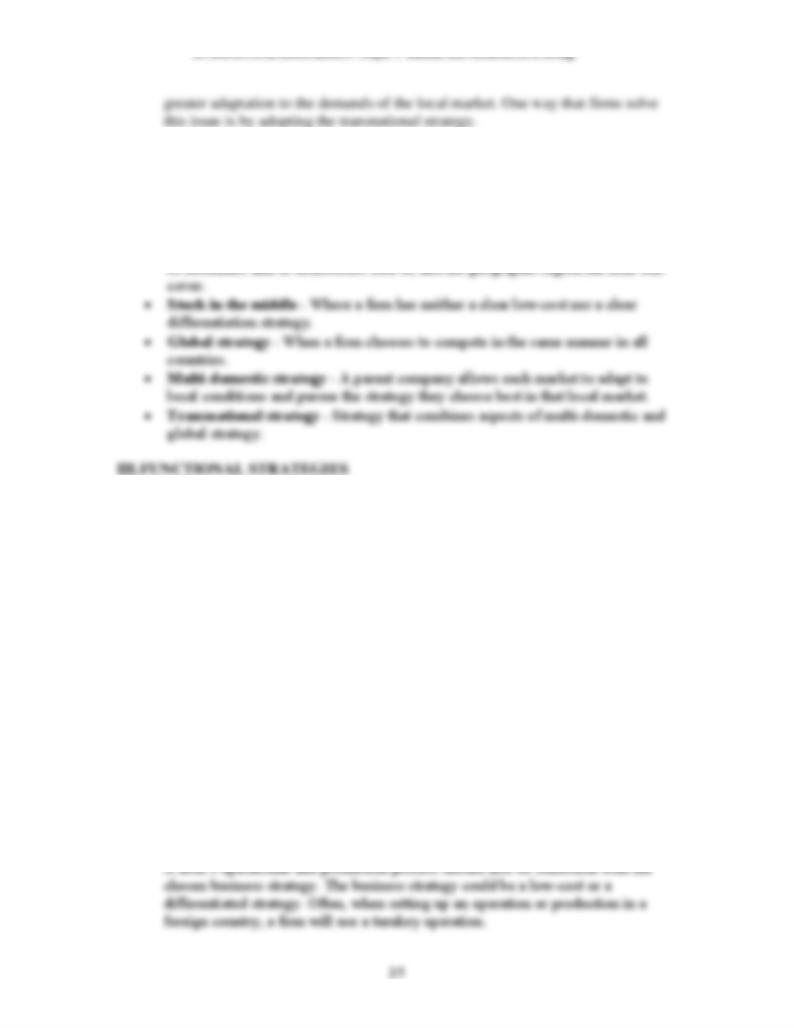
INTERNATIONAL MANAGEMENT Chapter 5: Business and Functional Level Strategy
2. Key Terms
• Low-cost strategy - Where a business seeks to sell a product at or near the
lowest possible price in the firm’s chosen market segment.
• Differentiation strategy - Seeks to provide some aspect of a product or service
that differs from that of competitors, such as higher quality, to increase the
likelihood of customers paying a premium for the product.
• Competitive scope - The breadth of products a firm will offer, such as the range
1. Key Concepts
Functional strategies should flow from the business-level strategy. The successful
use of strategy tactics is critical to the ultimate success of the business.
• Marketing
The marketing function covers a wide range of activities in an international firm,
including designing the firm’s marketing program that encompasses the ‘‘4Ps’’ –
product, pricing, promotion, and place (distribution).
• Accounting
Accounting is not only concerned with maintaining information about the
financial status of the firm, but also with providing data on how the firm is
meeting its strategic objectives. A key issue here is that there are no uniform
methods of reporting accounting information around the world.
• Finance
The functional finance strategy of a firm concerns principally the means in which
the firm funds its chosen activities. Financing for those activities must be present
before they can be carried out, and the financing should be consistent with the
strategy chosen. A finance strategy should not only provide financing, but should
also help a firm identify those key areas that can be done more efficiently or
cheaply.
• Operations/Production
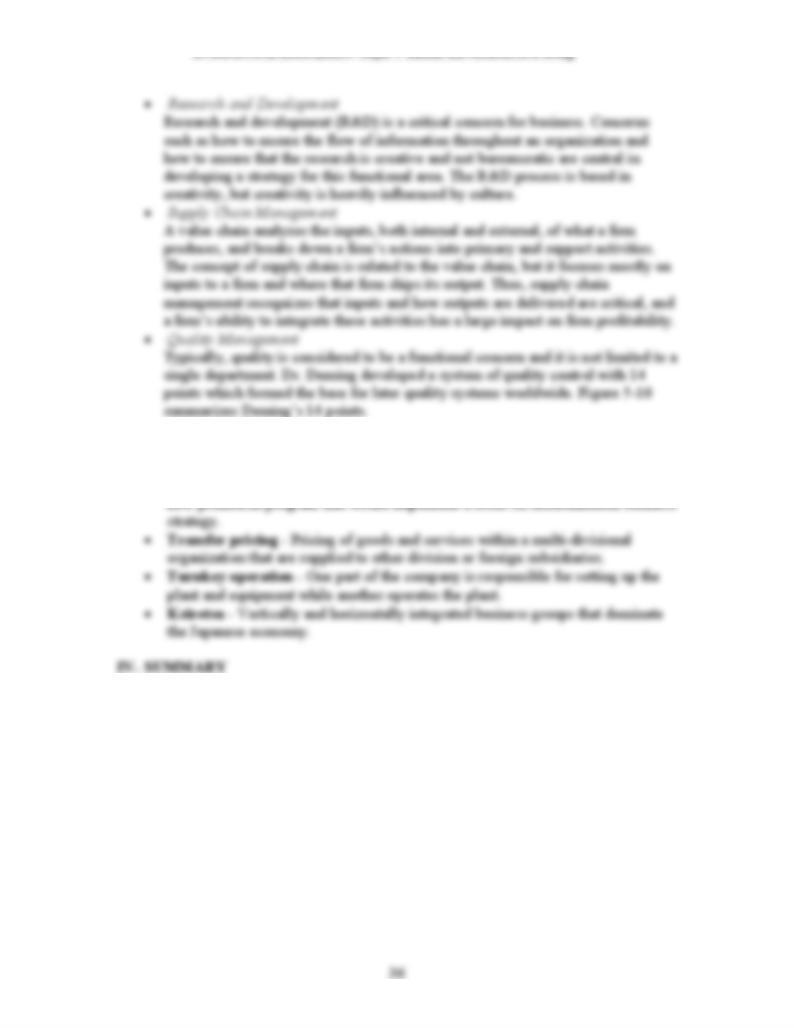
INTERNATIONAL MANAGEMENT Chapter 5: Business and Functional Level Strategy
2. Key Terms
• Functional strategies - Those strategies that direct what occurs in individual
functional areas, such as marketing, finance, and accounting.
• Strategic tactics - Strategic actions that help to implement a strategy, such as a
1. Key Concepts:
• This chapter has examined business-level and functional strategies.
• Business-level strategies should be consistent with the chosen corporate-level
strategy, and functional strategies.
• The two broad categories of business-level strategy are low cost and
differentiation.
• Once a firm decides on one of these, it must also determine the competitive scope
for that strategy—broad or narrow.
• The firm must then determine how much variation it will allow in the strategy as
it is implemented around the world.
• The firm then builds its functional strategies based on business-level strategies.
• Primary functional strategies, such as marketing, finance, accounting, and
production, are essential to the effective implementation of a firm’s strategy.
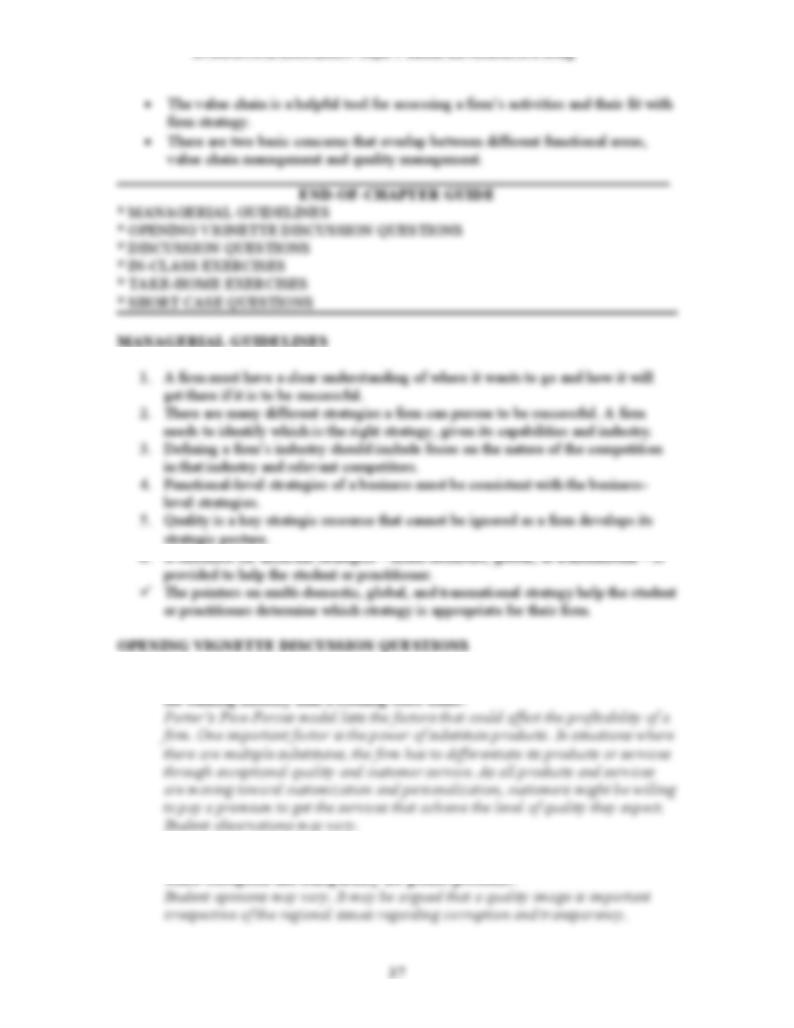
INTERNATIONAL MANAGEMENT Chapter 5: Business and Functional Level Strategy
1. Why would a differentiated product that charges a premium be more successful in
2. Do you think that a quality image is more important in a region of the world
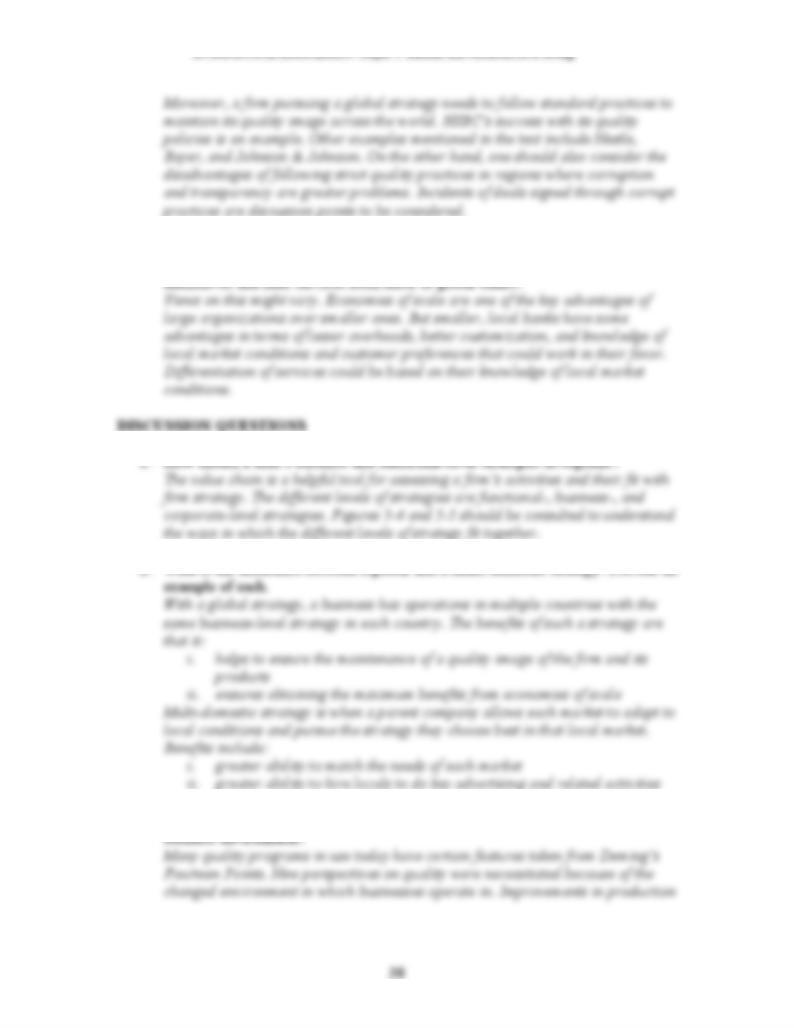
INTERNATIONAL MANAGEMENT Chapter 5: Business and Functional Level Strategy
3. Do global banks, such as Citibank and HSBC, have an across-the-board
advantage over small, local banks? Or are local banks able to differentiate
3. Do you believe that Dr. Deming’s Fourteen Points would be practical in today’s
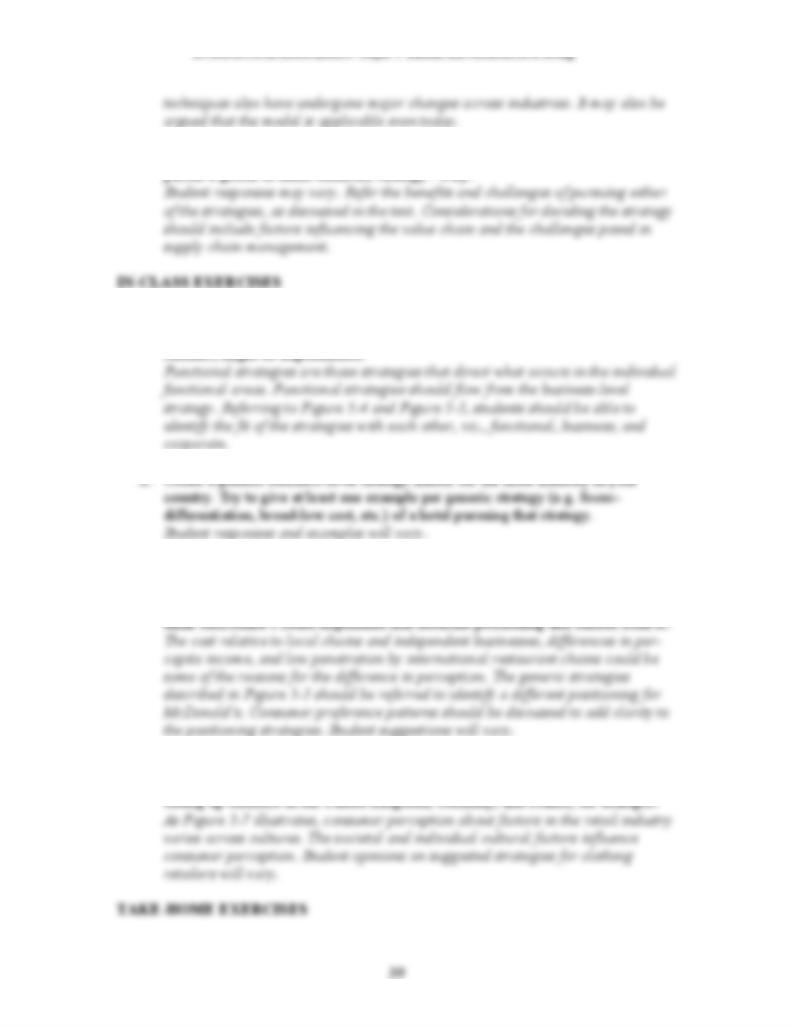
INTERNATIONAL MANAGEMENT Chapter 5: Business and Functional Level Strategy
4. If you were in a large food-processing firm, such as Campbell Soup, would you
1. Separate into teams. Each team should think of how the different functional
strategies at a firm with a low-cost strategy, such as Wal-Mart or Southwest
3. McDonald’s is positioned as a low-cost fast food restaurant in Hong Kong, but is
perceived as a more differentiated, higher quality restaurant in mainland China.
Discuss why McDonald’s is perceived differently in mainland China. How do you
4. Why do you think European consumers value different aspects of the retail
experience differently? What does this mean to the average clothing retailer in
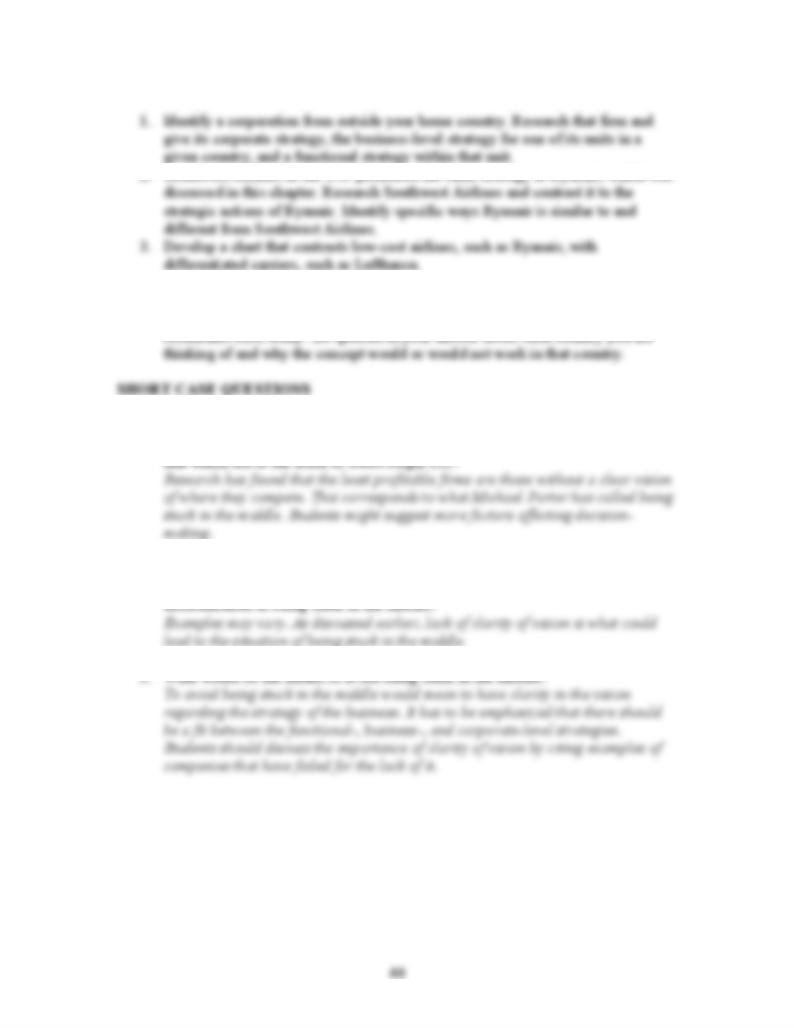
INTERNATIONAL MANAGEMENT Chapter 5: Business and Functional Level Strategy
4. How are fast-casual restaurants positioned in the generic strategies matrix
compared with the major fast-food restaurants? Do you think this concept of fast
casual can be brought to countries outside of the U.S. and Canada where few such
1. What are the factors in a firm’s culture that may keep it from clearly choosing a
strategy (stuck in the middle) and also allow structured decision making similar to
2. Can you identify any firms in your home country that are stuck in the middle
today? Would you classify airlines that seek to be both low cost and